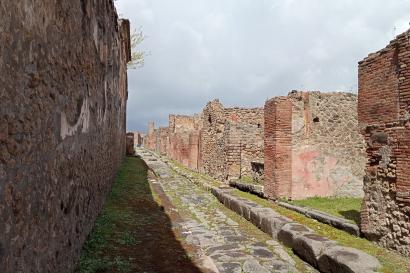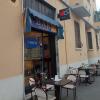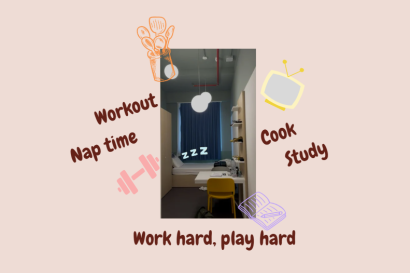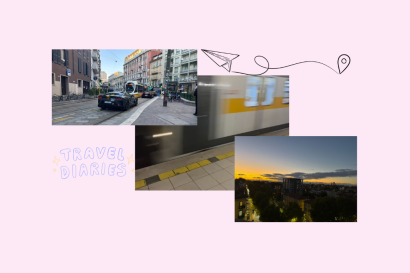There’s no way I can fit a beginner’s Italian language course into a blog post, but I hope this crash course can give you the momentum you’ll need to hit the ground running and start speaking Italian as soon as you arrive.
Before we get into the Italian language, it’s important to understand that dialects across Italy can vary greatly, so make sure you do a little research into the dialect you’ll be surrounded by. Europass Italian Language School does a great job explaining and providing examples of some different dialects across Italy, so check it out here:
https://www.europassitalian.com/blog/italian-language-dialects/
Firstly, if you haven’t learned a Latin language before, there are two important grammar concepts to understand: conjugation and gender matching.
Conjugation
In Italian, verbs are conjugated to show the subject of the sentence and the tense of the action being performed. This means that the ending of the verb changes depending on who is performing the action (I, you, he/she/it, etc.) and whether the action is happening in the past, present, or future.
Here is an example of the verb "parlare" (to speak) in the present tense:
Io parlo (I speak)
Tu parli (you speak)
Lui/lei parla (he/she speaks)
Noi parliamo (we speak)
Voi parlate (you all speak)
Loro parlano (they speak)
Gender matching
Each noun is either masculine or feminine. Typically (but not always), a masculine noun ends in “-o”, while a feminine noun ends in “-a”. This is important for two reasons:
- The article (“the” in English) changes depending on whether the noun is masculine or feminine. For example, “the boy” is “il ragazzo”, while “the girl” is “la ragazza”.
- Adjectives describing the noun change with the gender. “The perfect dog” is “il cane perfetto”, while “the perfect rock” is “la roccia perfetta”.
Now, some info to have an advantage and exceed specifically in the first couple weeks of your Italian class!
PRONUNCIATION RULES
Do you know why the “c” in “ciao” is pronounced “ch”, while in “che” it’s pronounced “k”? Get to it. Before learning vocabulary, you’ll help yourself out a TON if you learn pronunciation rules. Here’s a helpful video that summarizes all the most important ones:
https://www.youtube.com/watch?v=J2q9yYfewHU&ab_channel=MyItalianCircle
NUMBERS
You’ll need these to understand prices, times, terminals, and much more:
- 1 - uno
- 2 - due
- 3 - tre
- 4 - quattro
- 5 - cinque
- 6 - sei
- 7 - sette
- 8 - otto
- 9 - nove
- 10 - dieci
- 11 - undici
- 12 - dodici
- 13 - tredici
- 14 - quattordici
- 15 - quindici
- 16 - sedici
- 17 - diciassette
- 18 - diciotto
- 19 - diciannove
- 20 - venti
ALPHABET
Watch this video. This is not a joke nor a jest.
Now it’s finally time to get into the vocabulary that I actually found useful in my day-to-day life.
MUST-KNOW VOCABULARY
Dove - where
Perché - why
Come - how
Quale - which
Quanto - how much
Quando - when
Posso avere…? - can I have…?
Ho bisogno di… - I need…
Tavolo per due. - table for two.
Il conto, per favore. - the check, please.
Qui / qua - here
Fuori - outside
Ieri - yesterday
Oggi - today
Domani - tomorrow
(Non) voglio - I (don’t) want
UNIT 1 VOCAB
I’m gonna give you some secret info, and that’s the vocab from the whole first unit of IES Milan’s Italian 101 class. I learned this before I took the course, so I was able to use the course as a springboard to learn much more extra vocab outside of class rather than scrambling to keep up. It made becoming conversational so much easier, and I never felt like I was falling behind.
Do note: not all of this vocabulary turned out to be useful in day-to-day life. Studying this will put you ahead in Italian class, but it’s important that you only prioritize that which you believe you’ll have to use. Regardless, here’s all the vocab from Unit 1:
* Note: (f.) indicates a feminine noun; (m.) indicates a masculine noun.
Ciao - hi, bye (informal)
Buongiorno - good morning
Buonasera - good evening
Arrivederci - goodbye (formal)
A presto - see you soon
A domani - see you tomorrow
Buonanotte - goodnight
Sedia (f.) - chair
Finestra (f.) - window
Insegnante (m./f.) - teacher
Libro (m.) - book
Penna (f.) - pen
Lavagna (f.) - blackboard
Porta (f.) - door
Tavolo (m.) - table
COUNTRIES AND NATIONALITIES
Argentina -> argentino/a
Australia -> australiano/a
Brasile -> brasiliano/a
Canada -> canadese
Cina -> cinese
Francia -> francese
Germania -> tedesco/a
India -> indiano/a
Inghilterra -> inglese
Irlanda -> irlandese
Italian -> italiano/a
Messico -> messicano/a
Spagna -> spagnolo/a
Stati Uniti -> americano/a, statunitense
Scusa… - excuse me…
Come ti chiami? - What’s your name?
Piacere. - Nice to meet you.
Mi chiamo… - My name is…
Come si scrive… - How do you spell…
Puoi ripetere? - Can you repeat?
Come si pronuncia? - How do you pronounce it?
Che cosa significa? - What does it mean?
Di dove sei? - Where are you from?
Io sono italiano/a. - I am Italian.
Come si dice…? - How do you say…?
Studio in Italia / negli Stati Uniti. - I study in Italy / in the United States.
Dove abiti? - Where do you live?
Che cosa studi? - What do you study?
Dove lavori? - Where do you work?
Abito in centro / in periferia. - I live downtown / in the suburbs.
Qual è il tuo numero di telefono? - What is your phone number?
Qual è il tuo indirizzo? - What is your address?
Hai un’e-mail? - Do you have an email?
Signora (f.) - madam
Signore (m.) - sir
Professore (m.) - professor (masculine)
Professoressa (f.) - professor (feminine)
Nome (m.) - (first) name
Cognome (m.) - last name
Parola (f.) - word
Banca (f.) - bank
Macchina (f.) - car
Chiesa (f.) - church
Bicicletta (f.) - bike
Chiave (m.) - key
Essere - to be
Studiare - to study
Abitare - to live
Lavorare - to work
Parlare - to speak, to talk
Visitare - to visit
Ascoltare - to listen to
And that’s a wrap for your pre-Italy Italian crash course! I’ve made some quizlet sets for studying Italian through about the first half of the 101 class, so DM me on Instagram and I’ll send them your way. Good luck with your studies, and as they say in Italy, in bocca al lupo (good luck, or literally, “in the mouth of the wolf”)!

Abigail Stupar
I'm Abigail, a junior studying English and music at Macalester College, and I'll be in Milan, Italy for the spring semester. This is my first time leaving the country, and I want to share my experience as a low-income never-traveled-like-this-before student with you. My interests include writing stories, making art, writing music, learning languages, and exploring the outdoors.









